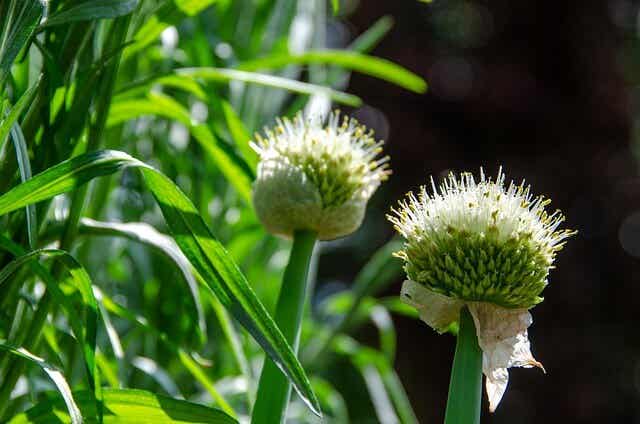The Science-Backed Benefits of Tarragon


Written and verified by the doctor Leonardo Biolatto
People have documented the benefits of tarragon for hundreds of years.
This medicinal plant, whose scientific name is Artemisia dracunculus L, and it’s in the same family as sunflowers. Also, it’s famous for its interesting culinary uses. Specifically, it’s usually used to flavor dishes with fish, meat, asparagus, and other foods.
Some people call it mugwort, but it’s important not to confuse it with Artemisia vulgaris, as they are completely different. Tarragon is even used in the pharmaceutical and cosmetic industries for its interesting properties.
Do you want to learn more about it?
Nutritional properties of tarragon
Many of the benefits of tarragon are nutritional. Approximately two tablespoons of fresh raw tarragon have a mere 5 calories. In its ground version, it has around 14 calories, 1 gram of protein, less than 1 gram of fat, and 2.5 grams of carbohydrates.
Among other things, as compiled by the United States Department of Agriculture‘s food database, tarragon provides the following:
- Vitamins A and C: 4% of the recommended daily dose.
- Vitamin B6: 6% of the recommended daily dose.
- Folic acid: 3% of the recommended daily dose.
- Calcium: 54 mg.
- Iron: 1.5 mg.
- Magnesium: 16.5 mg.
- Phosphorus: 14.9 mg.
- Potassium: 143 mg.
- Additionally, it has small amounts of sodium, zinc, manganese, and selenium.
You may be interested: Four Cheap Tricks to Naturally Aromatize Your Home
The main benefits of tarragon

Tarragon is often used to prepare food and beverages. However, its extracts are also common in cosmetic and medicinal products. However, there is no solid evidence to support its use as a first-line treatment for illnesses.
Thus, it’s essential to keep in mind that, although science supports many of its uses, it shouldn’t replace the treatments prescribed by the doctor. In fact, before taking it, it’s best to talk to a professional just to be sure. What are its main uses? We’ll explain more below.
The benefits of tarragon: It helps regulate glucose levels
Scientific studies have determined that tarragon has positive effects on glucose control and the way the body uses insulin. In particular, research published through the journal Phytomedicine determined that tarragon extract can help reduce blood sugar concentrations by up to 20%.
Also, a randomized double-blind study published in the Journal of Medicinal Food found that 1,000 mg of tarragon before breakfast and dinner can help control total insulin secretion, which helps you balance blood sugar.
It helps improve sleep
Poor quality of sleep can cause health problems in the short, medium, and long term. During the rest period, the body carries out processes that are important for the whole body to function. However, many factors can affect it.
Fortunately, supplements like tarragon can improve it. According to a study published in The American Journal of Chinese Medicine, this plant appears to have a sedative effect that helps regulate sleep patterns. However, more evidence is needed.
Also read: Risks, Side Effects, and Benefits of Sarsaparilla
The benefits of tarragon: It supports pain relief
One of the most prominent benefits of tarragon has to do with pain relief. Although it’s not a first-line treatment to calm this symptom, it does seem to help calm it temporarily. A study published in the medical journal Clinical Rheumatology suggests this.
According to this research, people who took 150 mg of tarragon per day had a significant improvement in pain from arthritis compared to those who took 300 mg per day and the placebo group. The researchers determined that the lower dose worked better because the body tolerated it better.
In another study published in Pharmaceutical Biology, they found similar results. Tarragon showed antinociceptive activity and positive effects against different painful conditions.

What other benefits of tarragon are there?
- The food industry uses tarragon essential oil to preserve food without needing synthetic chemicals. Regarding this, a study published in the Iranian Journal of Microbiology determined that this product can help fight bacteria like Staphylococcus aureus and Escherichia coli in foods like cheese.
- In patients with decreased appetite, tarragon extract can help. A study from 2011 found that this plant, combined with a high-fat diet, helps increase appetite by reducing levels of leptin, known as the satiety hormone.
- Preliminary studies detail that using Russian tarragon can positively affect athletic performance. However, more evidence is still required to corroborate this.
It’s safe, but you have to be careful
Most of the time, tarragon is safe and has no risk of side effects. However, the recommendation is to avoid using it too much or for too long. Also, don’t rule out possible drug interactions. Therefore, it’s always important to talk to your doctor.
All cited sources were thoroughly reviewed by our team to ensure their quality, reliability, currency, and validity. The bibliography of this article was considered reliable and of academic or scientific accuracy.
- Eidi A, Oryan S, Zaringhalam J, Rad M. Antinociceptive and anti-inflammatory effects of the aerial parts of Artemisia dracunculus in mice. Pharm Biol. 2016;54(3):549‐554. doi:10.3109/13880209.2015.1056312
- Spices, tarragon, dried. (January 4, 2019). FoodData Central. United States Department of Agriculture; USDA. Available in https://fdc.nal.usda.gov/fdc-app.html#/food-details/170937/nutrients
-
Ribnicky DM, Poulev A, Watford M, Cefalu WT, Raskin I. Antihyperglycemic activity of Tarralin, an ethanolic extract of Artemisia dracunculus L. Phytomedicine. 2006;13(8):550‐557. doi:10.1016/j.phymed.2005.09.007
- Méndez-Del Villar M, Puebla-Pérez AM, Sánchez-Peña MJ, González-Ortiz LJ, Martínez-Abundis E, González-Ortiz M. Effect of Artemisia dracunculus Administration on Glycemic Control, Insulin Sensitivity, and Insulin Secretion in Patients with Impaired Glucose Tolerance. J Med Food. 2016;19(5):481‐485. doi:10.1089/jmf.2016.0005
- dela Peña IJ, Hong E, Kim HJ, et al. Artemisia capillaris Thunberg Produces Sedative-Hypnotic Effects in Mice, Which are Probably Mediated Through Potentiation of the GABAA Receptor. Am J Chin Med. 2015;43(4):667‐679. doi:10.1142/S0192415X1550041X
-
Maham M, Moslemzadeh H, Jalilzadeh-Amin G. Antinociceptive effect of the essential oil of tarragon (Artemisia dracunculus). Pharm Biol. 2014;52(2):208‐212. doi:10.3109/13880209.2013.824007
-
Stebbings S, Beattie E, McNamara D, Hunt S. A pilot randomized, placebo-controlled clinical trial to investigate the efficacy and safety of an extract of Artemisia annua administered over 12 weeks, for managing pain, stiffness, and functional limitation associated with osteoarthritis of the hip and knee. Clin Rheumatol. 2016;35(7):1829‐1836. doi:10.1007/s10067-015-3110-z
-
Raeisi M, Tajik H, Razavi RS, et al. Essential oil of tarragon (Artemisia dracunculus) antibacterial activity on Staphylococcus aureus and Escherichia coli in culture media and Iranian white cheese. Iran J Microbiol. 2012;4(1):30‐34.
-
Ilnytska O, Stütz AM, Park-York M, et al. Molecular mechanisms for activation of the agouti-related protein and stimulation of appetite. Diabetes. 2011;60(1):97‐106. doi:10.2337/db10-0172
- Oliver, J.M., Jagim, A.R., Pischel, I. et al. Effects of short-term ingestion of Russian Tarragon prior to creatine monohydrate supplementation on whole body and muscle creatine retention and anaerobic sprint capacity: a preliminary investigation. J Int Soc Sports Nutr 11, 6 (2014). https://doi.org/10.1186/1550-2783-11-6
This text is provided for informational purposes only and does not replace consultation with a professional. If in doubt, consult your specialist.








